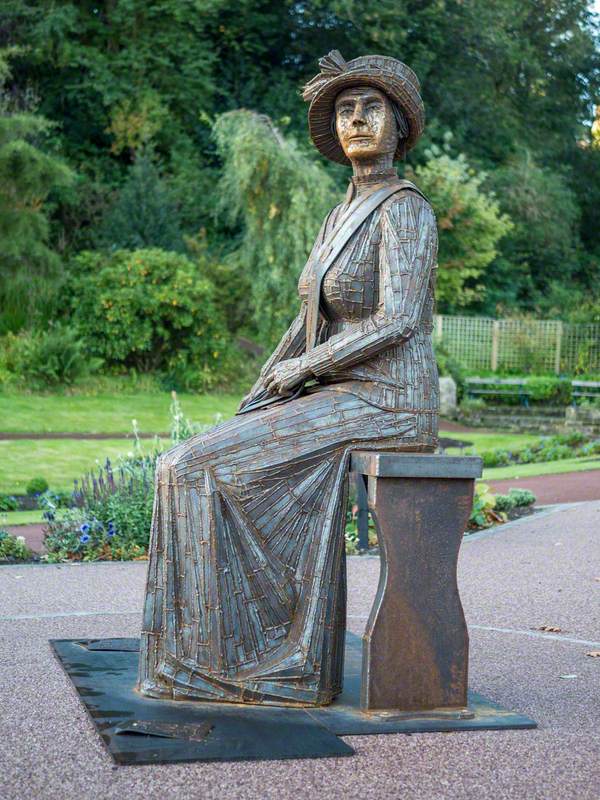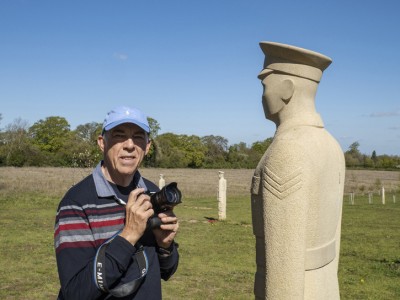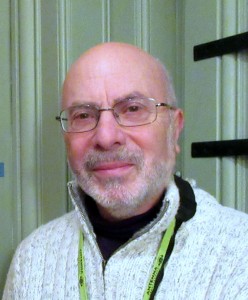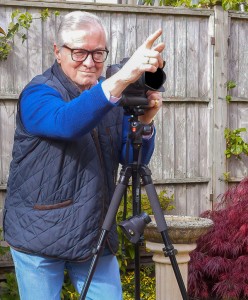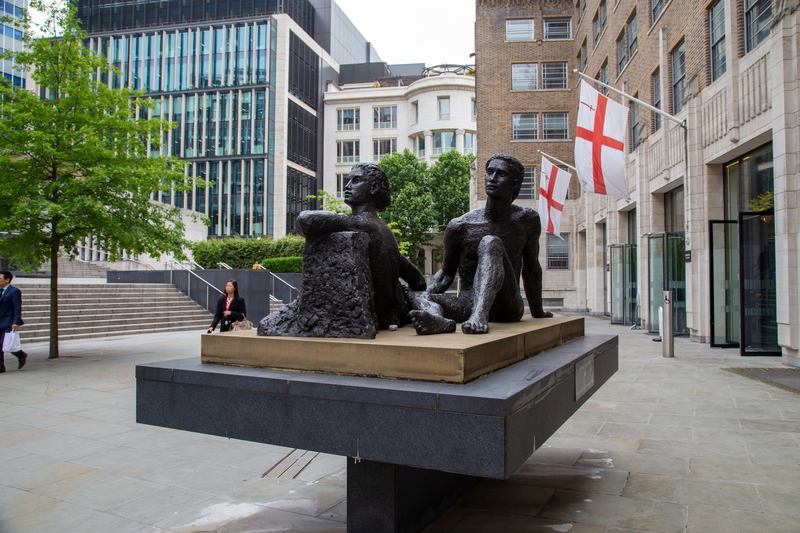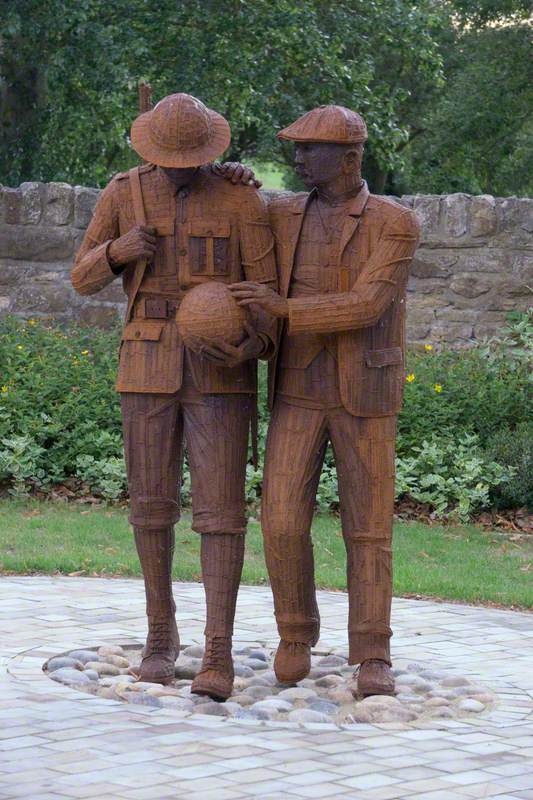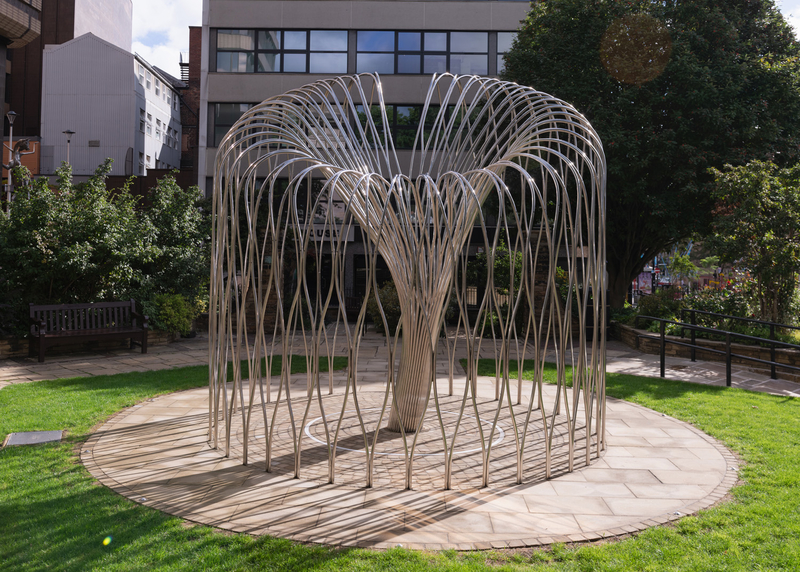During National Volunteers' Week 2021, Art UK is celebrating the contributions made by our sculpture project volunteers. During the first week of June, we will showcase a different volunteer story each day that details why and how they decided to participate.
Please introduce yourself
When my husband asked what I would like for my 60th birthday, I decided on a camera, without having any idea what it might lead to. It turned into a hobby that got me out and about, and led to new friendships as I navigated my way through courses. A few years later and I am joint-chair of the local camera club, and have RPS letters after my name!
Susan Dawson
Describe your role in the Art UK sculpture project
I have been a volunteer photographer on the sculpture project since May 2018. Although I thought I had finished the job of recording in my allotted territory of half of Northumberland way before the pandemic hit, being locked down gave me time to find more sites to add to the list. It was exciting to dust off the camera and venture out and about again after the last lockdown finished.
Why did you apply to volunteer?
As a member of the RPS, I saw a call to arms, or at least to clicking fingers, on their website.
What did you enjoy most within your role?
To be honest I hadn't realised there were many sculptures in my county as it is largely rural. How wrong I was! It hadn't occurred to me that my brief would include all those war memorials and drinking fountains, but, in addition, there have been fascinating figurative and abstract artworks to discover. I have been interested to see how the demise of the mining industry in the region is represented in public art in pieces such as the Ellington Memorial.
My local artwork is Emily Wilding Davison, Northumberland's lawless lassie of suffragette fame, who is always there for a chat in rain, shine and snow in Carlisle Park, Morpeth.
Was there anything you found particularly challenging?
Right from the time of the training session it was clear that three things would prove to be of significance when out on a shoot: the weather, other people's cars, and men at work. Sometimes, when so many miles from home that it would be difficult to return, there was no choice but to work around shadows, parked vehicles and constructions site hoardings.
Did you develop any new skills?
Dealing with massive spreadsheets was new to me, as was the very helpful Grid Reference Finder website, which helped me pinpoint exactly where I had been. I developed an interest in researching the sculptures which had become 'mine', and writing creative stories which involved them.
susan2
I have been trying to get a sense of the chronology of public art, then I can put together a talk for my Women's Institute.
Can you share a favourite memory of your time volunteering?
My very first assignment was to find a village cross in a place (North Charlton) that had long ceased to be a village and was now a field of llamas. I don't know who was more nervous, them or me, but I was lucky their owners were in to give me permission to investigate. Soon a group of walkers suddenly appeared out of nowhere wondering what was so fascinating about this pile of stones.
The animal theme continued when I discovered that accessing the Seaton Delaval obelisk involved a hike through the fields. By the time I had tramped through the weeds around this massive erection to view and snap it from all angles and turned round, a heavy shower of rain came over, and a large group of cows had decided to stand in a threatening line across the footpath back. I was very glad to climb back into my car.
When trying to find a bust of Matthew White Ridley, who had donated the park that bears his name, I found an empty plinth and that the poor man had been carted off by thieves and melted down. Passers-by must have wondered why I was encircling and photographing an empty plinth. I have since visited again and he now has a resin replacement, unveiled by another Matthew White, four Viscounts on from the original.
In Ashington, the statue of footballer Jackie Milburn features him trapping the ball with his raised foot. By the time I got to him, it seemed that someone must have decided to engage him in a tackle to the detriment of his left foot, and he was imprisoned inside ugly building-site fencing. He was hard to photograph, but fortunately released some months later.
Susan Dawson, Art UK volunteer
Art UK thanks each and every volunteer that contributed their time to capturing an incredible record of public sculpture in the UK.
More photographs by sculpture project volunteers can be viewed in a Curation: Art UK Volunteer Photographers' Gallery

